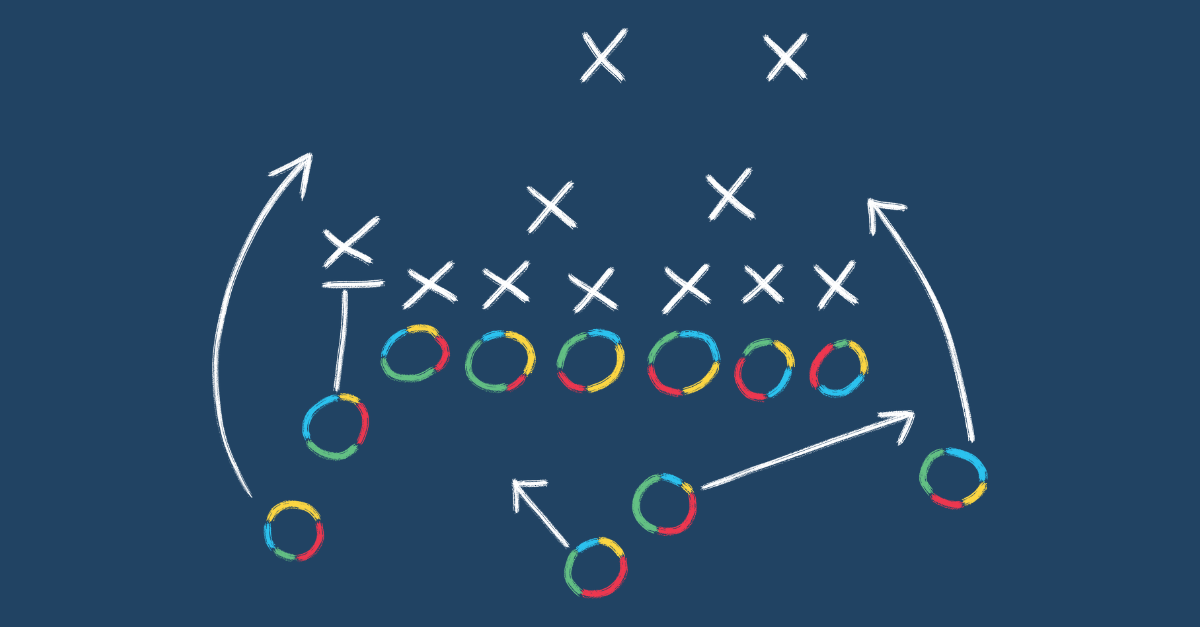All through your life, you’re making all kinds of decisions. And whether consciously or not, you make those decisions by following a personal decision-making process—one that has developed over the years and become a consistent pattern that is grounded in your thinking preferences.
The buying decision, like any decision someone makes, is also directly related to the way a person thinks. It only stands to reason, then, that if you can get inside your customer’s head and have a better understanding of how they think—what they focus on, what catches their attention and how they got through the process of thinking through a decision—then you’ll be way ahead of the game when you’re in a selling situation.
For a quick and simple way to get inside a prospect or customer's head and understand their mental processes, try using the Whole Brain® Model, a metaphor for how people tend to use their brains and how our thinking works.
Whether you’re in a sales role or you’re a marketer who wants to better connect with and appeal to your customers, there are four benefits to using this model:
- Information. To truly understand people, you can't just look at their behaviors, because it just doesn’t give you enough information. Especially in today’s pressure-filled world, behaviors can be variable depending on the situation. The Whole Brain® Model reveals the thinking "engine" behind any buying decision and puts observable behaviors into an actionable context. Even better, when you have a large or diverse audience, it gives you the information you need to hit all the “thinking bases” so you can address the needs of all the decision-makers involved.
- Authenticity. You don’t have to adopt a new sales system or be someone you’re not to practice Whole Brain® Thinking. Instead, using the model will enrich your existing system and sales processes by helping you understand how and why people decide to buy. Don't throw away your current sales methods or change who you are. Just build on your current anchor points using a Whole Brain® approach.
- Solutions. You can also use the model to get a better handle on your own thinking process and diagnose any challenges that you encounter during the sales cycle. The clarity that brings can help you and your sales manager drill down to problems and solve them.
- Speed. When buyer and seller align at the deep level of thinking, they accelerate the sales process. Bottom line: It makes the buying decision easier, faster and more value-oriented for everyone involved.
Put it to Work: Selling the Whole Brain® Way
Want an easy way to get started? Think REPS! Follow these tips to sell more effectively to different thinkers:
Results. The blue quadrant in the upper left part of the model represents the mental processes involved in analyzing data. People who prefer this mode of thinking can quickly sift through a lot facts and cut to the chase—the bottom-line results they want to achieve.
TIP: When talking to people with strong preferences in this quadrant, be sure to back up your claims with evidence. The customer or prospect is thinking: "In God we trust; all others must have data."
Execution. The green quadrant on the lower left is all about how to achieve desired results. People with this preference place a high value on follow-through. They move into action and make sure that tasks get done. In addition, they like to follow step-by step processes—to "cross the t's and dot the i's."
TIP: When talking to people with strong preferences in this quadrant, move through the sales process in a clear and consistent way. Otherwise you can instantly lose credibility.
People. Now we move to the brain's right hemisphere. The red quadrant on the lower right represents "people first" thinking. Customers with this preference want to know how a buying decision will affect the people they care about—co-workers, friends, family members. They also look for a "gut" feeling that you're the right person to work with because you see the world from their viewpoint.
TIP: When talking to people with strong preferences in this quadrant:
- Practice deep and authentic listening. As Stephen Covey put it, "Seek first to understand, then to be understood."
- Don't run through a standard list of sales techniques. Use your intuition to go beyond the obvious questions. Engage in a natural way with customers and prospects with a goal to build long-term relationships.
- Monitor your level of rapport with the prospect or customer. You'll know you're succeeding when people open up and share what they feel as well as what they think.
Strategy. The yellow quadrant in the upper right represents the ability see context—the "big picture." People with this preference can think creatively about their goals and ways to achieve them. In addition, they can frame problems in new ways and combine ideas to come up with novel solutions.
TIP: Before you talk to customers or prospects with strong preferences in this quadrant, take the time to learn about the current developments in their industry. Discover the challenges they face and the specific problems they want to solve. During meetings, think flexibly and respond with agility. If it serves the customer, be willing to put your agenda on hold and take the conversation down a new path. Ask questions such as:
- Why are you attracted to this product or service?
- What do you ultimately want?
- What if there are other ways to get what you want?
As a byproduct of asking these questions, you might spot problems that have not yet been identified. That's a real service to your customers—and another way to prompt the thinking that leads to a buying decision.
With so many of us pressed for time and juggling more and more responsibilities, it doesn’t make sense to focus energy and attention on areas that will be unnecessary—or even detrimental—to the sale.
Buying is about thinking. By tapping into the thinking of your customers and prospects and aligning your approaches with their decision-making processes, you’ll be able to quickly engage them, understand their pain points, articulate value in a more compelling way and close deals faster. Sounds like smart selling to me.


.png)










